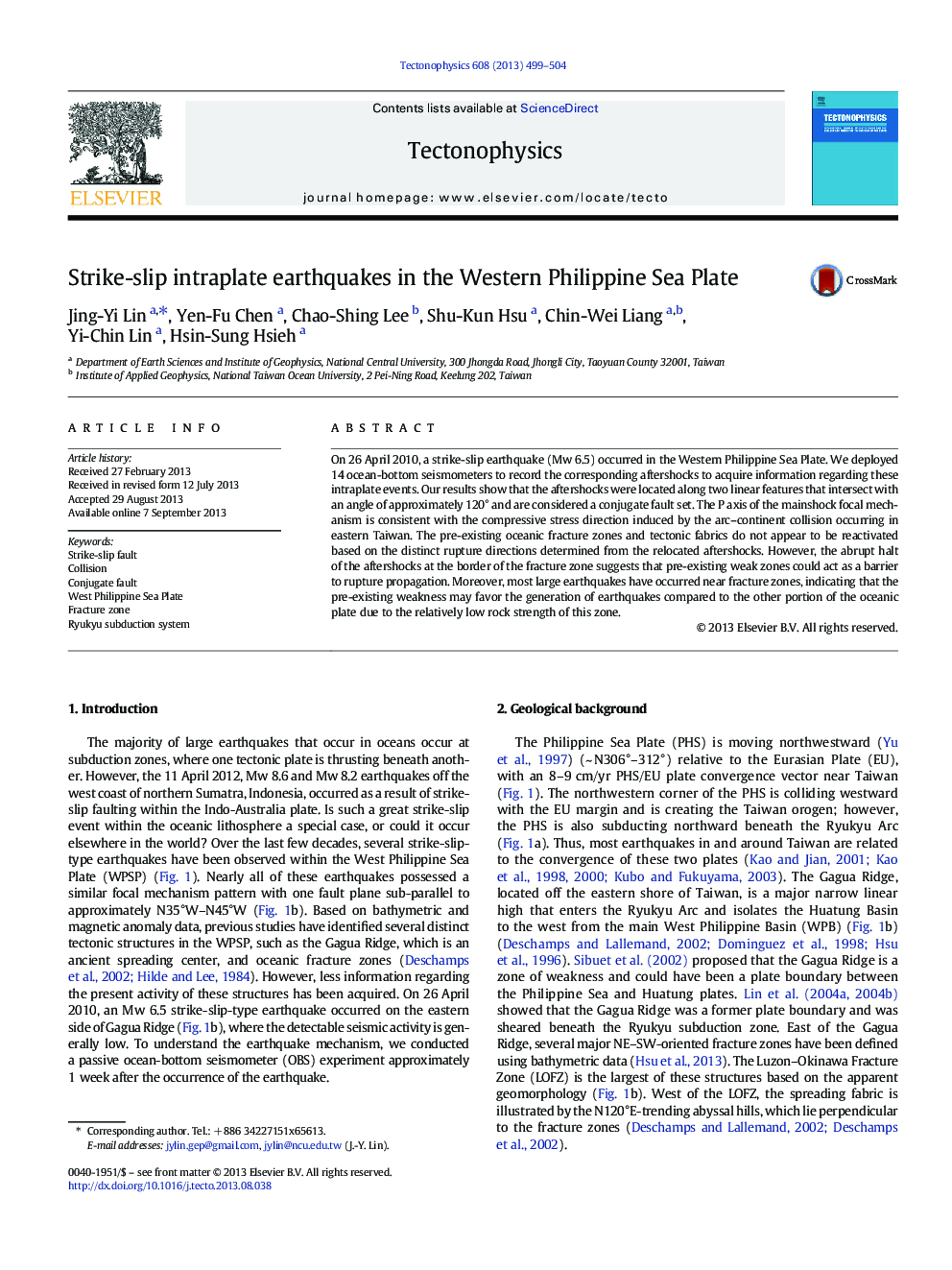| Article ID | Journal | Published Year | Pages | File Type |
|---|---|---|---|---|
| 6433971 | Tectonophysics | 2013 | 6 Pages |
â¢The intraplate earthquakes in the WPSP show a conjugate fault set.â¢The stress regime in the WPSP is dominated by an arc-continent collision.â¢Large intraplate earthquakes generally occur near pre-existing weak zones.
On 26 April 2010, a strike-slip earthquake (Mw 6.5) occurred in the Western Philippine Sea Plate. We deployed 14 ocean-bottom seismometers to record the corresponding aftershocks to acquire information regarding these intraplate events. Our results show that the aftershocks were located along two linear features that intersect with an angle of approximately 120° and are considered a conjugate fault set. The P axis of the mainshock focal mechanism is consistent with the compressive stress direction induced by the arc-continent collision occurring in eastern Taiwan. The pre-existing oceanic fracture zones and tectonic fabrics do not appear to be reactivated based on the distinct rupture directions determined from the relocated aftershocks. However, the abrupt halt of the aftershocks at the border of the fracture zone suggests that pre-existing weak zones could act as a barrier to rupture propagation. Moreover, most large earthquakes have occurred near fracture zones, indicating that the pre-existing weakness may favor the generation of earthquakes compared to the other portion of the oceanic plate due to the relatively low rock strength of this zone.
